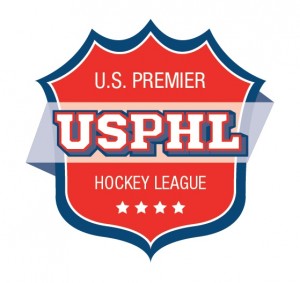Tucson’s ice, inline communities continue to build across all levels

As Tucson’s biggest hockey stars finish up, waiting to take their place on the ice on any given weekday afternoon – in front of the sizable Tucson Arena’s thousands of empty seats – is a substantial group of pretty enthusiastic youngsters.
Without a community ice rink to call home, every Southern Arizona ice hockey participant from Mites to adults currently shares the Tucson Arena. The downtown building is famous, for one, as the raucous home of the well-supported and longstanding University of Arizona ice hockey program. But that’s also in addition to hosting the likes of boxing and monster truck rallies, Disney on Ice and bull riding, the Ringling Bros. circus and plenty of concerts.
Simply put, balancing ice time for Tucson groups like the UA ice program and the local youth and adult hockey programs is nothing short of tricky.
Yet, while Tucson is believed to be the largest city in the U.S. without a local public ice rink, the sport didn’t die when the last facility closed its doors in 2007. Actually, hockey continues to grow in Southern Arizona – and that goes for the robust inline community, as well.
Rebuilding a college powerhouse
Four years after the UA hockey program went through a seismic change – that’s when it parted ways with its founder and the former Icecats started from scratch as the “new” UA Wildcats – the Wildcats’ current head coach Chad Berman has led his team from unranked as the season opened to the No. 13 spot in the American Collegiate Hockey Association Division I national ranking at the start of December.
Playing in what’s considered the top facility in the entire ACHA – especially after a recent $8 million-plus renovation – Berman said the “Madhouse on Main Street” and the dedicated fan base give Arizona a recruiting edge.
“If we can get a recruit on campus, we’ve got them, that’s for sure,” Berman said. “This place sells itself. When you play before 4,000 or 6,000 fans, when you have 70-degree weather in January, you got the palm trees and all that good stuff, it’s not hard to get guys excited.”
The Wildcats’ one main concern continues to be ice limitations. When the Tucson Arena has other events, the Wildcats have to hit Interstate 10 for practice. Although, a new ice covering – aimed at keeping the ice in shape even while other events are taking place – has cut down the weeknight trips to the Valley down a lot.
“Last year, we bused 23 times to Chandler, but this year, we’re looking at about eight or nine,” Berman said. “It’s cut down quite a bit.”
Ice kittens grow; adult hockey thrives
Founded years after the local ice rink closed, the Wildcat Youth Hockey Association (WYHA) has weathered the ice time issues and is still in a growth mode.
WYHA president Ryan DeJoe said the group has had almost 100 kids enroll in the “Learn to Skate” program so far this year, in addition to fielding competitive Mite, Squirt, Pee Wee and 18U teams.
“When we first started, it was one hour of ice and every kid we had was out there,” said DeJoe. “It’s progressed to now where we have these fully-functional teams that are registered with USA Hockey and everything. Our hockey numbers have grown every year.”
Balancing ice time on a day-to-day-basis aside, WYHA’s other concerns come from not being able to schedule home tournaments because of the rink situation. During the summer, it might send teams up to the Phoenix area for skating work.
Still, DeJoe remains positive. The Wildcat Youth Hockey board raises money to keep costs low – like $10 for each “Learn to Skate” session and $600 a year for Squirts, PeeWee and 18U.
“We’re doing our best to make sure to keep hockey cost-effective so everyone in Tucson can bring their kids out,” DeJoe said.
While Wildcat Youth Hockey is in its fourth season, the Tucson Adult Hockey League (TAHL) was founded right after the ice rink closed. Now, the close-knit league has grown the point where it has a waiting list.
The TAHL started with four teams, then grew to six and now has 10 and plays two nights a week.
“We could have more,” said Danny Plattner, one of the league’s founders, adding that some husbands and wives and fathers and sons play together in the TAHL. “Most of our referees play in the league. Everybody knows each other.”
Sr. Wildcats lead Jr. Wildcats
After a dip in popularity, youth inline hockey in Tucson has rebounded of late, thanks to some help from the local college teams.
Jr. Wildcats roller hockey board president Erik Dahl said that while soccer had started pushing hockey for attention at the Tucson Indoor Sports Center, a new coaching tree, led by UA roller hockey player David Sticker, has given the youth inline program the boost it needed. Sticker is now the Jr. Wildcats’ head coach.
In addition to Sticker, UA inline head coach Jeremy Hiltabidel also coaches and UA roller hockey president Bryan Kromenacker said the college Wildcats try to send players to Jr. Wildcat practices.
“Our kids get to know a lot of the UA players,” Dahl said. “They play here, so it’s kind of something for them to look up to.”
On the college side of the equation, UA roller hockey has only been around since 2011, but is already a regular on the national scene.
In addition to helping out the youth teams, the UA program, which fields Division I and II teams in the National Collegiate Roller Hockey Association, plays in the local adult house league, too.
Kromenacker thinks the UA program will rise even further as it taps the university’s out-of-state talent as a complement to the core group of Arizona-bred players at both the D-II and D-III levels.
“There is a lot of latent talent, because we have a lot of California students here,” he said.
A new hope?
While inline hockey has a solid home in Southern Arizona, could the Old Pueblo get a local ice rink of its own, too?
Local attorney Thomas Laue says yes, adding that he expects his group to sign a land lease this month to build Copper Igloo, a 62,000-square-foot facility with one permanent sheet of ice and a multi-sport surface.
“We should have at least a thousand kids in town involved in skating sports,” Laue said. “The facts are maybe a hundred right now because there is just no place for them to skate.”
The impact of a local rink on Berman’s UA program can’t be overstated, while Plattner said the adult hockey league could probably have leagues every night if a rink were added.
Added DeJoe: “It’s huge. Everyone who plays hockey knows it’s the best sport around, so any kid who starts playing hockey is going to love it.”
— James Kelley










